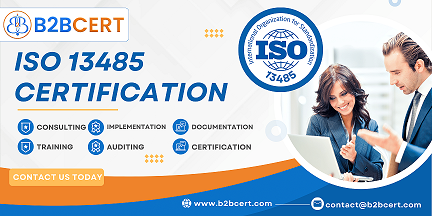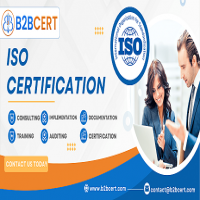What are the steps involved in obtaining ISO 13485 certification in Bangalore?

Strong 8k brings an ultra-HD IPTV experience to your living room and your pocket.
Obtaining ISO 13485 certification in Bangalore, or anywhere else, involves a systematic process to ensure your medical device quality management system (QMS) meets the standard's requirements. Here's a breakdown of the key steps:
1. Gap Analysis:
Before diving into implementation, conduct a thorough gap analysis of your current QMS against the ISO 13485 standard. This involves reviewing your existing documentation, processes, and practices to identify areas where they fall short of the standard's requirements. A consultant specializing in ISO 13485 can be invaluable at this stage. This analysis will form the basis of your implementation plan.
2. QMS Design and Development:
Based on the gap analysis, design and develop your QMS to meet the requirements of ISO 13485. This includes:
Documenting your QMS: Create the necessary documents, including a quality policy, quality manual, documented procedures, work instructions, and records. These documents are the backbone of your QMS and demonstrate how you control your processes.
Defining roles and responsibilities: Clearly define the roles and responsibilities of personnel involved in the QMS. This ensures accountability and efficient operation.
Establishing processes: Develop and implement processes for key activities such as design and development, production, quality control, corrective and preventive actions (CAPA), and management review. These processes should be documented and followed consistently.
3. Implementation:
Once your QMS is designed, implement it throughout your organization. This involves training your employees on the new processes and procedures, and ensuring they are followed consistently. Effective training is critical for successful implementation. This phase often requires adjustments and refinements as the system is put into practice.
4. Internal Audit:
After the QMS has been implemented for a sufficient period (typically a few months), conduct an internal audit to assess its effectiveness. The internal audit verifies that your QMS is operating as intended and meets the requirements of ISO 13485. This process identifies areas for improvement before the certification audit.
5. Management Review:
Conduct a management review to evaluate the performance of the QMS and identify opportunities for improvement. Management review is a formal process involving top management and should cover topics such as the results of internal audits, customer feedback, and performance against quality objectives.
6. Selection of a Certification Body:
Choose an accredited certification body (also known as a registrar) to conduct the certification audit. Ensure the certification body is accredited by a recognized accreditation body. Research different certification bodies and compare their services, costs, and timelines. In Bangalore, you'll find several options.
7. Certification Audit (Stage 1 and Stage 2):
The certification audit typically consists of two stages:
Stage 1 (Document Review): The certification body reviews your QMS documentation to ensure it meets the requirements of ISO 13485.
Stage 2 (On-site Audit): The certification body conducts an on-site audit to verify that your QMS is implemented effectively and conforms to the standard. They will observe your processes, interview employees, and review records.
8. Addressing Nonconformities:
If the certification audit identifies any nonconformities (gaps between your QMS and the standard's requirements), you will need to address them through corrective actions. This involves identifying the root cause of the nonconformity, implementing corrective actions to prevent recurrence, and verifying the effectiveness of those actions.
9. Certification:
Once the certification body is satisfied that your QMS meets the requirements of ISO 13485 and all nonconformities have been addressed, they will issue you an ISO 13485 certificate.
10. Surveillance Audits:
After you are certified, the certification body will conduct periodic surveillance audits to ensure that your QMS continues to be effective and conforms to the standard. These audits are typically conducted annually.
11. Re-certification:
Every three years, you will need to undergo a re-certification audit to maintain your ISO 13485 in Bangalore. This process is similar to the initial certification audit.
By following these steps, medical device companies in Bangalore can successfully achieve ISO 13485 certification, demonstrating their commitment to quality and regulatory compliance. Remember that this process requires dedication, resources, and commitment from all levels of the organization.
Note: IndiBlogHub features both user-submitted and editorial content. We do not verify third-party contributions. Read our Disclaimer and Privacy Policyfor details.


